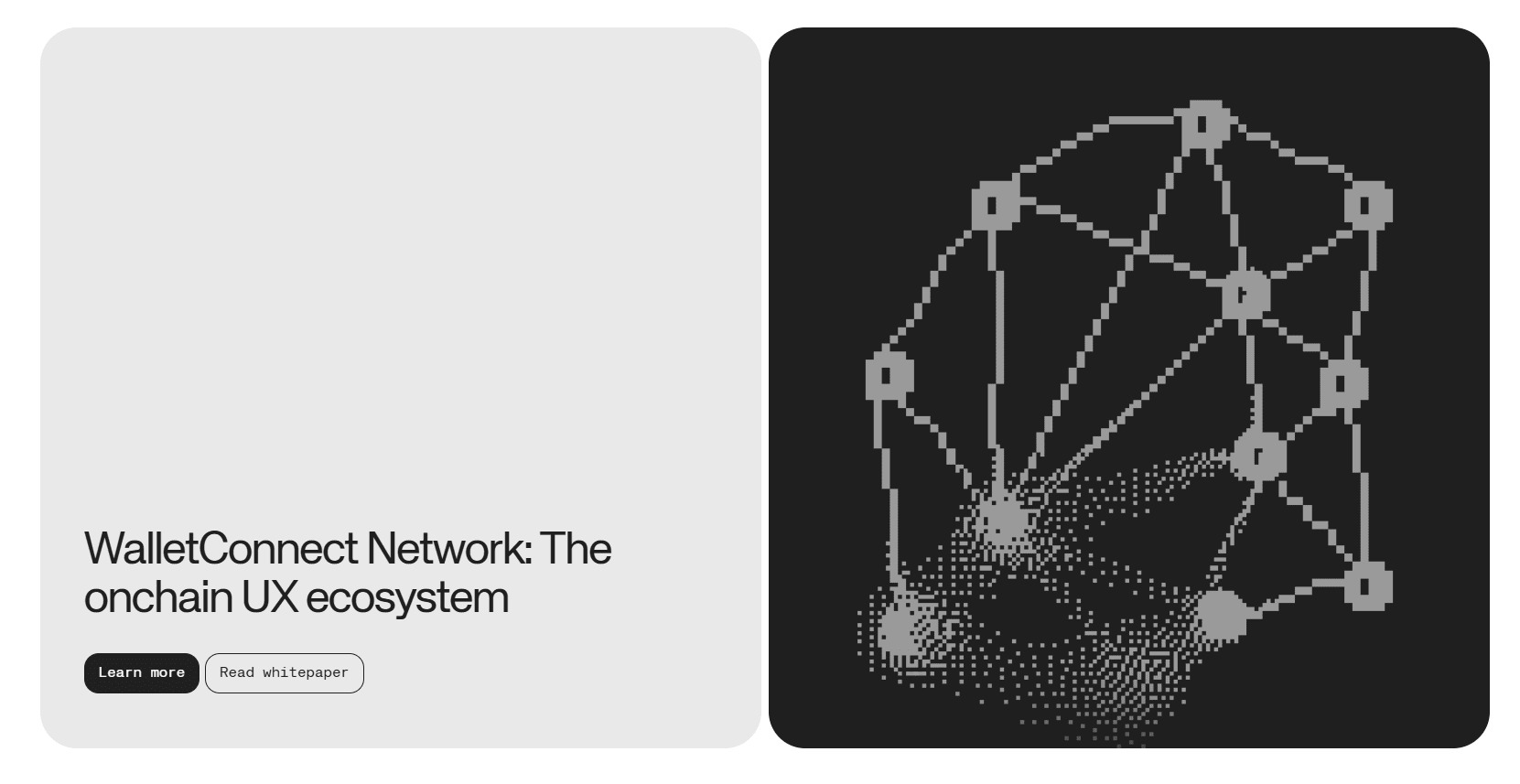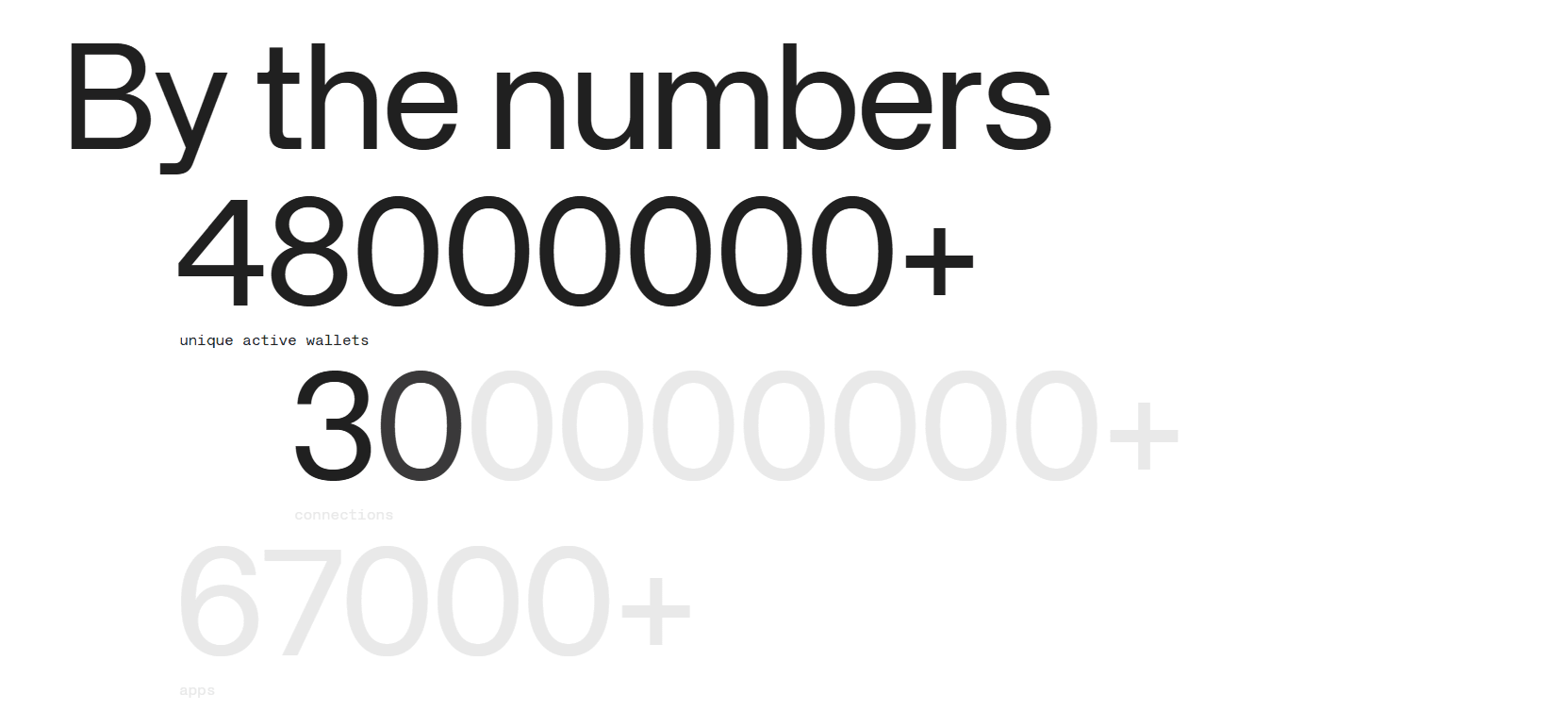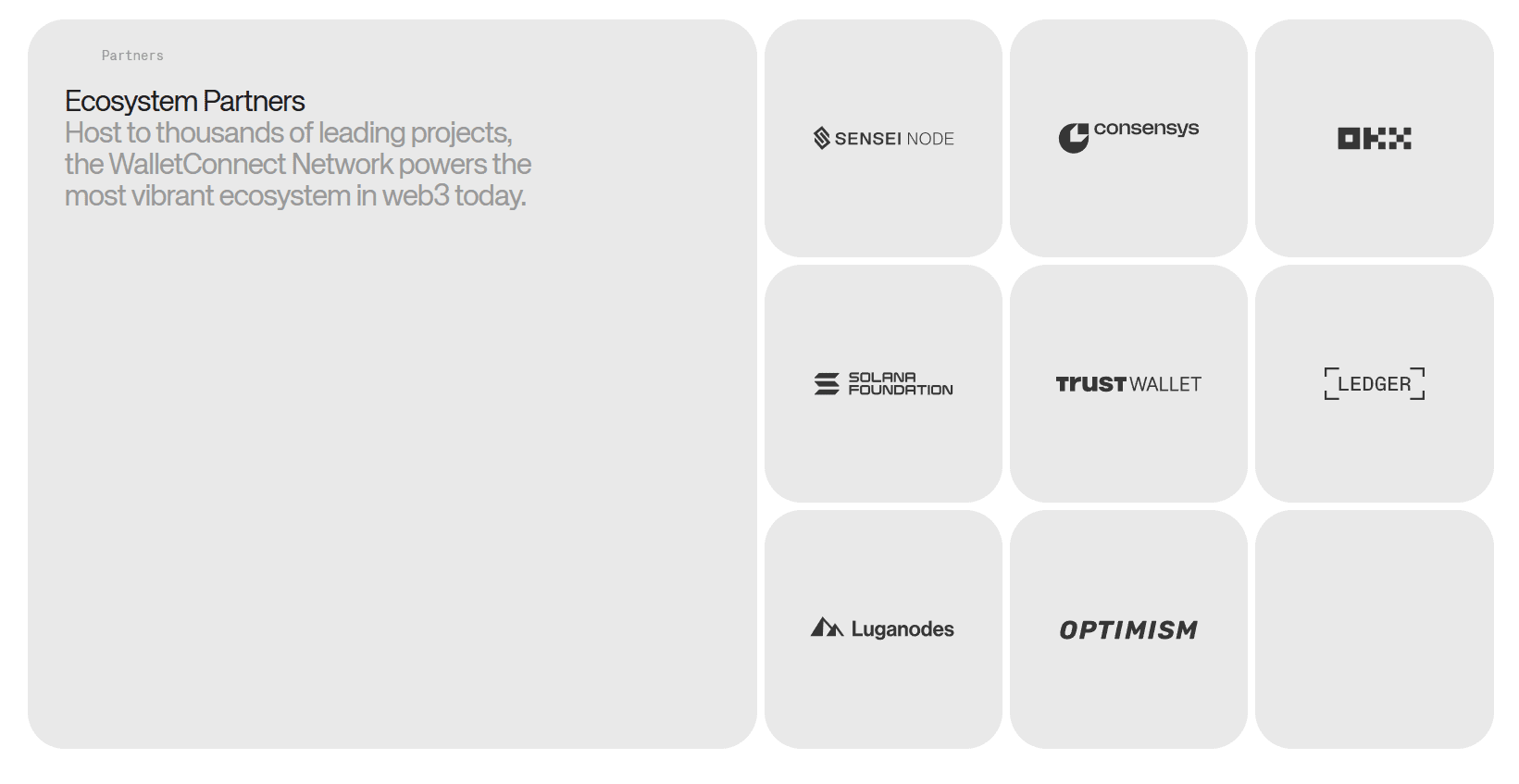#WCT #WalletConnect @WalletConnect
I. Introduction and Founding
• Founded: 2018
• Founder: Pedro Gomes, who also serves as the Fund Director.
• Original company name: WalletConnect Inc., recently rebranded to Reown as the platform evolves.

II. Products and Services
• Core product: An open-source, secure protocol that enables encrypted communication between cryptocurrency wallets and decentralized applications (dApps), facilitating interaction without exposing users' private keys.
• Support: Multi-chain compatibility (Ethereum, Solana, Bitcoin, and other networks).
• Developer tools:
• AppKit: Optimizing dApp development and enhancing user experience in a decentralized environment.
• WalletKit: Enabling developers to create flexible, user-friendly wallet solutions.
• Governance and Tokenomics:
• WalletConnect Coin (WCT): Launched in September 2024, supporting decentralized governance, staking, network participation, and incentivizing node operators and developers (total supply: 1 billion tokens).
• Fund: The WalletConnect Fund was established to oversee community-led governance and the transition to decentralized infrastructure, owned by the community.

II. Technology Analysis
+Technological innovation
• Decentralized connectivity: WalletConnect bridges the gap between wallets and dApps through a decentralized, encrypted protocol, minimizing risks associated with centralized points of failure.
• Privacy & Security: Prioritizing user privacy with end-to-end encrypted connections, ensuring private keys are not exposed during interactions.
• Cross-chain interoperability: Supporting multiple blockchains, allowing users to interact with assets and services across different networks from a single wallet interface.
• Open-source ecosystem: The protocol and toolkit (AppKit, WalletKit) are open-source, driving rapid adoption, transparency, and innovation for developers.
+Real-world use cases
• Onchain transactions: Enabling secure and seamless transaction signing on decentralized applications.
• Asset management: Users can manage diverse blockchain assets through an integrated wallet experience.
• Staking and Governance: WCT holders participate in governance, supporting the decentralization of the network and contributing to protocol upgrades.
• Developer adoption: The toolkit is widely used to simplify and standardize Web3 and wallet application development, minimizing operational friction.
• Network reliability: The upcoming expansion of node operators will continue to enhance reliability, security, and decentralization.
+Partnerships and Ecosystem
• Reown: Managing infrastructure and supporting developer engagement and ecosystem development.
• Industry collaborations: Partnerships with analytics companies (e.g., Nansen for user experience research) and integrations with popular dApps and wallets.
• Community involvement: WCT encourages various stakeholders—developers, relayers, and users—to actively participate in the protocol development process.
III. Milestones & Timeline
Year Milestones
2018 WalletConnect launched as a protocol for communication between wallets and dApps.
2023 Recorded 41 million connections across the network.
2024 - 340% growth in connections (totaling 179 million).
- Achieved over 4.1 million Unique Active Wallets (UAW).
- Launching WalletConnect Coin (WCT) in September, introducing decentralized governance and staking.
- Airdrop campaign distributing 50 million WCT to early contributors.
- The WalletConnect Fund was established for community-led governance.
2025 Strategic focus on expanding the number of node operators to enhance decentralization and security.
- Reown & Nansen released the report "Onchain UX Status 2025," analyzing user trends and UX challenges in the ecosystem.
IV. Market Analysis
Industry Overview
• Industry: Web3 infrastructure, focusing on wallet-dApp connectivity, a foundational layer for the onchain economy.
• Market size: Not specified in sources, but rapid growth in active wallet numbers and connection volumes indicates a large and expanding user base.
Growth Potential and Trends
• User growth: WalletConnect has seen exponential growth (340% YoY in 2024), reflecting increased Web3 adoption.
• Decentralization: The shift towards decentralized network operations and community governance aligns with industry-wide trends supporting trustless infrastructure.
• Interoperability: The growing demand for seamless multi-chain experiences is driving innovation across the industry; WalletConnect's protocol is positioned as a leader in this space.
• Developer ecosystem: Open-source tools and flexible architecture nurture a growing developer community, enhancing ecosystem stickiness.
• Expanding use cases: With WCT, WalletConnect is evolving to include staking, reputation systems, and service level guarantees, broadening use cases and revenue streams.
Challenges and Constraints
• User experience: Despite technical advancements, challenges remain around fragmentation, inconsistent user journeys, and educational gaps (e.g., limited understanding of smart wallets among users).
• Security concerns: Balancing security and usability remains a significant challenge, as highlighted by the trend of users managing multiple wallets to mitigate risks.
• Interoperability barriers: Limited integration between wallets and applications still creates friction, hindering widespread adoption.
Competitive Landscape
• Competitors: There are other wallet connection protocols and Web3 middleware, but WalletConnect stands out as the most widely adopted and integrated protocol due to its open-source approach and multi-chain compatibility.
• Differentiation: Focusing on decentralization, active governance, robust developer tools, and scalability positions WalletConnect as the backbone of onchain connectivity.

V. Conclusion
WalletConnect has quickly established itself as the backbone of Web3 infrastructure, enabling secure, decentralized, and interoperable connections between wallets and applications. Through technological innovation, community-centered governance, and expanded networking and tooling strategies, WalletConnect is well-positioned to support the next era of onchain activity. However, addressing persistent UX and interoperability challenges will be crucial for achieving widespread adoption and unlocking the full potential of the onchain economy.
Thank you!



